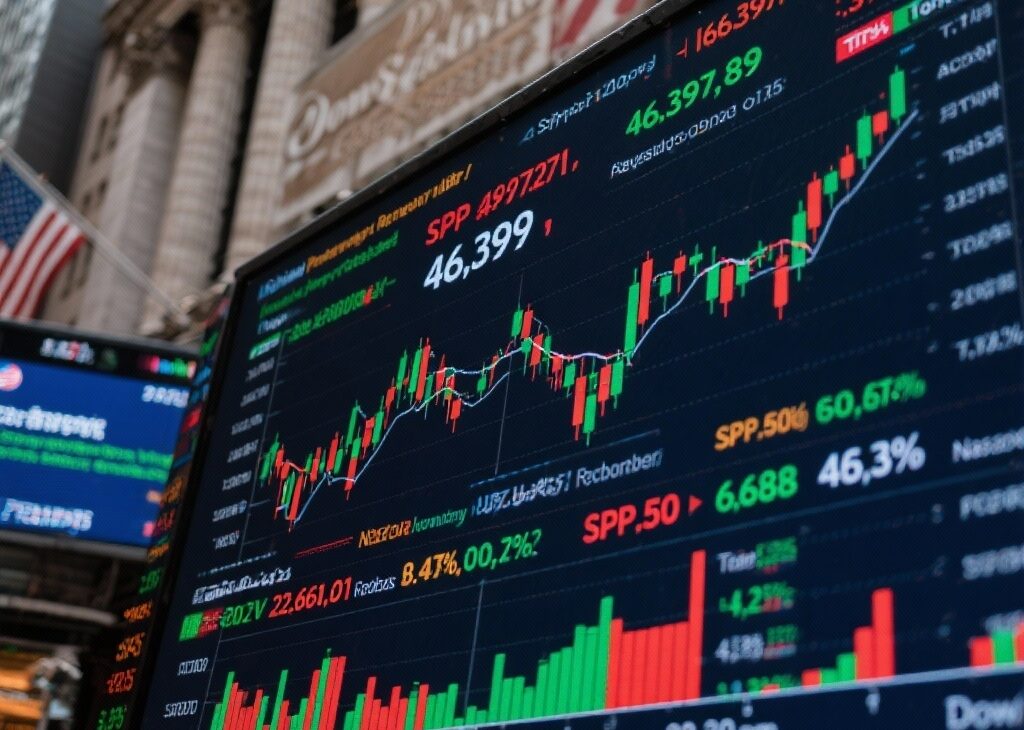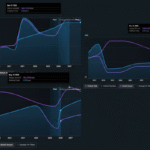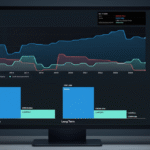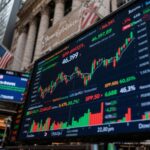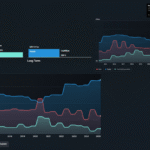Executive Summary
U.S. stock markets demonstrated remarkable resilience on Tuesday, September 30, 2025, closing higher despite looming concerns over a potential government shutdown. The Dow Jones Industrial Average reached a fresh closing high of 46,397.89, while both the S&P 500 and Nasdaq Composite posted gains, capping off an unusually strong September that defied historical trends.
Market Performance Overview
Daily Results
Tuesday’s trading session saw all three major indices advance, with investors displaying confidence in the face of political uncertainty:
- S&P 500: Closed up 0.41% at 6,688.46
- Nasdaq Composite: Climbed 0.31% to finish at 22,660.01
- Dow Jones Industrial Average: Advanced 81.82 points, or 0.18%, to close at 46,397.89 (record closing high)
Monthly Performance
September 2025 marked a significant departure from historical patterns. The S&P 500, which has averaged a 4.2% decline during September over the past five years, instead gained more than 3% this month. The performance across major indices was notably strong:
- S&P 500: Up more than 3% for the month
- Dow Jones: Gained nearly 2%
- Nasdaq Composite: Outperformed with a 5.6% gain
Quarterly Performance
The third quarter of 2025 concluded with impressive results across the board:
- S&P 500: Up almost 8% quarter-to-date
- Nasdaq Composite: Notched more than 11% quarterly gain
- Dow Jones: Up more than 5% since the end of June, marking its fourth positive quarter of the last five
The Shutdown Standoff
Political Dynamics
The federal government faces a midnight funding deadline, with political leaders from both parties engaging in a high-stakes game of chicken. President Donald Trump acknowledged Tuesday that while “nothing is inevitable,” a shutdown is “probably likely.”
House Speaker Mike Johnson (R-La.) expressed skepticism about averting a funding lapse by the deadline, placing responsibility with Senate Minority Leader Chuck Schumer (D-N.Y.) and House Minority Leader Hakeem Jeffries (D-N.Y.). Jeffries countered by stating that any government shutdown would be a Republican decision.
Market Response to Shutdown Risk
Historical precedent suggests that government shutdowns typically have minimal impact on equity markets, as most stoppages resolve within two weeks. This historical pattern appears to be informing investor behavior, with markets largely taking the prospect in stride.
Adam Crisafulli of Vital Knowledge noted, “When it comes to Washington, the market widely expected a shutdown to happen, so investors are largely sitting tight for now, but if this extends beyond two weeks, people will start to become more concerned.”
However, several factors distinguish this potential shutdown from previous episodes:
- Federal Workforce Threats: The Trump administration has suggested the possibility of mass firings of federal workers, which could amplify economic impact
- Duration Uncertainty: Concerns exist that this shutdown could extend beyond the typical two-week window
- Economic Fragility: The broader economic backdrop of slowing labor markets and stagflation risks makes the economy potentially more vulnerable to disruption
Economic Data Implications
Jobs Report Delay
A government shutdown would prevent the Labor Department from releasing the September nonfarm payrolls report as scheduled for Friday. This data point is critical for assessing labor market health and informing the Federal Reserve’s October policy meeting decisions.
Peter Corey, co-founder and chief market strategist at Pave Finance, suggested that a delay might actually benefit markets: “This could spare the market the potential of seeing August’s 22,000 payroll number sink below zero, as is likely given the statistics are already dangerously close. A delay would postpone any investor disappointment and give the market a chance to release more positive data in the interim to soften the impact.”
Consumer Confidence Weakness
Tuesday brought additional signs of economic strain when the September reading on consumer confidence came in lower than expected, adding to existing concerns about economic momentum.
Credit Rating Considerations
A prolonged shutdown could prompt rating agencies to reassess U.S. creditworthiness. This concern is particularly salient given that Moody’s downgraded U.S. credit in May 2025, making the fiscal situation a sensitive issue for market participants.
Sector Performance and Individual Stock Movements
Software Sector Weakness
Software stocks faced headwinds during Tuesday’s session:
- Paychex: Pulled back more than 1% following quarterly results
- Salesforce: Declined 3.3%
Technology Bright Spots
Despite broader software sector weakness, certain technology names showed strength:
- Nvidia: Rose in sympathy with CoreWeave after the cloud infrastructure company, backed by Nvidia, announced a $14.2 billion artificial intelligence cloud infrastructure deal with Meta Platforms
This development underscores continued investor enthusiasm for AI-related infrastructure plays, even amid broader market uncertainties.
Market Headwinds and Investor Concerns
Beyond the immediate shutdown threat, investors are navigating several significant challenges:
- Labor Market Deceleration: Signs of slowing employment growth have raised concerns about economic momentum
- Stagflation Risk: The combination of sluggish growth and persistent inflation pressures creates a challenging environment for both businesses and policymakers
- Elevated Valuations: Stock prices remain at historically high levels, leaving limited room for error should economic conditions deteriorate
Analysis and Outlook
Market Resilience
The stock market’s ability to reach new highs amid shutdown concerns demonstrates several key dynamics:
- Shutdown Expectations: Markets had already priced in the likelihood of a government funding lapse
- Historical Precedent: Investors are drawing comfort from past shutdowns that proved transitory and relatively benign for equities
- Strong Technical Momentum: The positive monthly and quarterly performance suggests underlying strength in market trends
Risk Factors
However, several factors warrant continued vigilance:
- Extended Shutdown Duration: Should the funding lapse extend beyond two weeks, market sentiment could shift significantly
- Federal Workforce Actions: Mass firings or extended furloughs could create genuine economic disruption beyond typical shutdown effects
- Data Blackout: The inability to access key economic indicators could increase uncertainty and volatility
- Credit Rating Pressure: Further downgrades to U.S. creditworthiness could trigger institutional selling and increase borrowing costs
Fed Policy Implications
The Federal Reserve’s October policy meeting looms large, with officials potentially forced to make decisions with incomplete information should economic data releases be delayed. This uncertainty could lead to:
- More cautious monetary policy adjustments
- Extended reliance on anecdotal and real-time data sources
- Potential delay in policy normalization if shutdown impacts prove significant
Conclusion
The U.S. stock market’s performance on Tuesday, September 30, 2025, encapsulates the complex interplay between political dysfunction and market resilience. The Dow Jones Industrial Average’s record closing high, achieved against a backdrop of shutdown concerns, demonstrates investors’ confidence that this political impasse will prove transitory.
September’s strong performance across all major indices, particularly the S&P 500’s 3%+ gain in a historically weak month, suggests robust underlying market conditions. The third quarter’s impressive results—with the S&P 500 up nearly 8% and the Nasdaq gaining over 11%—further reinforce this positive momentum.
However, investors would be wise to maintain measured optimism. While historical precedent suggests government shutdowns have minimal market impact, the current economic environment of slowing growth, inflation concerns, and elevated valuations provides less cushion for unexpected disruptions. Should the shutdown extend beyond typical timeframes or include unprecedented actions like mass federal workforce reductions, market dynamics could shift rapidly.
As markets enter the fourth quarter, the resolution of the shutdown standoff, forthcoming economic data (once available), and Federal Reserve policy decisions will prove critical in determining whether Tuesday’s record highs mark the continuation of the bull market or represent a peak achieved before more challenging conditions emerge.


